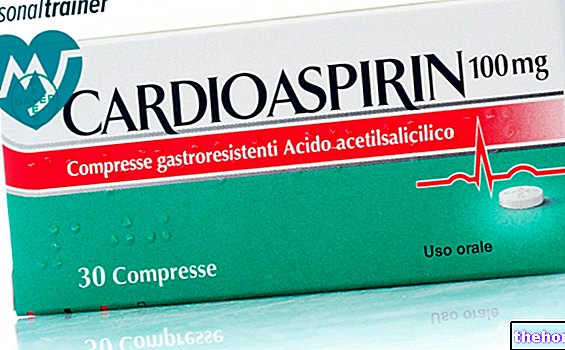Active ingredients: Flunitrazepam
Roipnol 1 mg film-coated tablets
Why is Roipnol used? What is it for?
PHARMACOTHERAPEUTIC CATEGORY
Benzodiazepines with hypnotic action.
THERAPEUTIC INDICATIONS
Short-term treatment of insomnia. Benzodiazepines are only indicated when the disorder is severe, disabling, or causes the person to suffer severe discomfort.
Contraindications When Roipnol should not be used
Myasthenia gravis. Use of this drug in patients with known hypersensitivity to benzodiazepines or to any of the excipients. Severe respiratory insufficiency. Sleep apnea syndrome.
Administration to children. Severe hepatic insufficiency.
Precautions for use What you need to know before taking Roipnol
It is recognized that, in the case of the use of short-acting benzodiazepines, withdrawal symptoms may appear in the interval between one dose and the next, particularly at high doses.
Duration of treatment.
The duration of treatment should be as short as possible (see Dose, method and time of administration). In general, the duration of treatment varies from a few days to 2 weeks, up to a maximum of 4 weeks, including the gradual withdrawal period.
The extension of therapy beyond these periods must not occur without a thorough re-evaluation of the clinical situation.
It may be helpful to inform the patient that therapy will be of limited duration and to explain precisely how the dosage should be progressively decreased.
Furthermore, it is important that the patient is informed of the possibility of rebound phenomena, in order to minimize the anxious reaction that the possible appearance of such symptoms can trigger upon discontinuation of the drug.
Specific groups of patients.
Dosages indicated for the elderly are lower than those for adults (see Dose, method and time of administration). Benzodiazepines should be used with caution in the elderly due to the risk of sedation and / or muscle relaxant effects which can lead to falls, often with serious consequences. Similarly, reduced dosages are indicated in patients with impaired liver function and in patients with chronic respiratory failure due to the risk of respiratory depression.
Interactions Which drugs or foods can modify the effect of Roipnol
Tell your doctor or pharmacist if you have recently taken any other medicines, even those without a prescription.
The combination with drugs that depress the central nervous system may intensify the central depressive effect (antipsychotics, neuroleptics, hypnotics, anxiolytics / sedatives, antidepressants, narcotic analgesics, antiepileptics, anesthetics and sedative antihistamines).
The combination of Roipnol with drugs that depress the CNS, including alcohol, can potentiate the effects on sedation, respiration and haemodynamic parameters.
Alcohol should be avoided in patients taking Roipnol (see Special Warnings). For warnings about other CNS depressant drugs, including alcohol, see Overdose.
In the case of narcotic analgesics, an enhancement of the euphoric effect of the narcotic may occur which can increase psychological dependence.
Compounds that inhibit certain liver enzymes (especially cytochrome P450) may increase the activity of benzodiazepines and benzodiazepine-like agents. A possible interaction with potent CYP3A4 inhibitors (including but not limited to those listed below) cannot be excluded. .
Azole antifungals: Fluconazole, Ketoconazole, Itraconazole
Cimetidine
HIV protease inhibitors
Gemfibrozil (PPAR-α-Agonist)
Macrolide antibiotics: Erythromycin, Clarithromycin, Telithromycin
Nefazodone (SNRI)
Statins
Verapamil (Ca2 + -Antagonists)
Grapefruit juice
Roipnol can be administered concomitantly with oral antidiabetic agents and anticoagulants.
Warnings It is important to know that:
Benzodiazepines are not indicated as the primary treatment of psychotic illness.
Concomitant use of alcohol / CNS depressants
The concomitant use of Roipnol with alcohol and / or drugs with central nervous system depressant activity should be avoided. Such concomitant use may increase the clinical effects of Roipnol, including possible profound sedation and clinically relevant respiratory and / or cardiovascular depression ( see Interactions) Patients should be advised to avoid the consumption of alcoholic beverages while exposed to the drug, due to the mutually potentiating side effects.
Medical history of alcohol or drug abuse
Roipnol should be used with extreme caution in patients with a history of alcohol or drug abuse (see Interactions
Hypersensitivity
In predisposed individuals, hypersensitivity reactions, such as rash, angioedema, or hypotension, may occur.
Tolerance.
After repeated use for a few weeks, a loss of efficacy of benzodiazepines with respect to hypnotic effects may occur.
Rebound insomnia.
On discontinuation of treatment, transient syndrome may occur, in which symptoms that led to treatment with benzodiazepines recur in an aggravated form, together with rebound insomnia. This can be accompanied by other reactions, including mood swings, anxiety, and restlessness. Since the risk of withdrawal or rebound symptoms is greater after abrupt discontinuation of treatment, it is recommended to gradually decrease the dosage.
Amnesia
Benzodiazepines can induce antegrade amnesia. This condition occurs much more often in the first few hours after taking the drug, and therefore, to reduce the risks, patients should ensure that they are able to sleep undisturbed for 7-8 hours (see Side Effects).
Psychiatric reactions and paradox
Benzodiazepine use is known to induce paradoxical reactions such as restlessness, agitation, irritability, aggression, disappointment, anger, nightmares, hallucinations, psychosis, inappropriate behavior and other adverse behavioral effects. be suspended. These reactions are more frequent in the elderly (see Undesirable effects).
Dependence.
Chronic use of benzodiazepines and benzodiazepine-like agents, even at therapeutic doses, can lead to the development of physical and psychological dependence on these drugs (see Side Effects). The risk of dependence increases with dose and duration of treatment. risk is higher in patients with a history of alcohol and / or drug abuse.
Suspension
Once physical dependence has developed, abrupt discontinuation of treatment will be accompanied by withdrawal and rebound symptoms. These can consist of headaches, body aches, anxiety of extreme severity, tension, restlessness, confusion, irritability and rebound insomnia. In severe cases, the following symptoms may occur: derealization, depersonalization, hyperacusis, numbness and tingling in the extremities, hypersensitivity to light, noise and physical contact, hallucinations or seizures.
Important information about some of the ingredients
Roipnol contains lactose. If you have been told by your doctor that you have an intolerance to some sugars, contact your doctor before taking this medicinal product.
Pregnancy and breastfeeding
Pregnancy
There are insufficient data on flunitrazepam to evaluate its safety in use during pregnancy.
If the product is prescribed to a woman of childbearing potential, the patient should be advised of the opportunity to contact her doctor to stop taking the product if she intends to become pregnant or suspects she is pregnant.
Although the passage of flunitrazepam across the placenta is poor after a single dose, prolonged administration during the third trimester of pregnancy should be avoided.
If, for serious medical reasons, flunitrazepam is administered during the last period of pregnancy, or during labor, effects on the newborn such as hypothermia, hypotonia and moderate respiratory depression due to the pharmacological action of the drug may occur.
In addition, infants born to mothers who have taken benzodiazepines chronically during late pregnancy may develop physical dependence and may be at some risk of developing withdrawal symptoms in the postnatal period (See Special Warnings).
Feeding time
Since benzodiazepines are excreted in breast milk, flunitrazepam should not be given to breastfeeding mothers.
Effects on ability to drive and use machines
Sedation, amnesia, impaired ability to concentrate and impaired muscle function can adversely affect the ability to drive or use machines. Insufficient sleep duration can increase the likelihood of impaired alertness.
Dosage and method of use How to use Roipnol: Dosage
Adults 0.5-1 mg.
In exceptional circumstances the dose can be increased to 2 mg.
Elderly patients should take half the dose indicated for adults.
Patients with hepatic insufficiency and patients with chronic respiratory insufficiency should take a reduced dose.
The drug should be taken at bedtime.
Treatment should be as short as possible. In general, the duration of treatment varies from a few days to 2 weeks, up to a maximum of 4 weeks, including the gradual withdrawal period.
In certain cases, extension beyond the maximum treatment period may be necessary; such extension should not occur without a thorough reassessment of the patient's condition. Treatment should be started with the lowest indicated dose.
The maximum dose should not be exceeded as this carries a greater risk of serious CNS side effects.
Overdose What to do if you have taken too much Roipnol
In case of accidental ingestion / intake of an excessive dose of Roipnol, notify your doctor immediately or go to the nearest hospital.
As with other benzodiazepines, an overdose should not be life threatening unless concomitant other CNS depressants (including alcohol) are taken.
In the treatment of overdose of any drug, the possibility that other substances have been taken at the same time should be considered
Symptoms
Benzodiazepines commonly cause numbness, ataxia, dysarthria, and nystagmus.
An overdose of Roipnol, when taken alone, is rarely life-threatening but can result in areflexia, apnea, hypotonia, hypotension, cardiorespiratory depression and coma.
Coma, if it occurs, usually lasts a few hours but can last longer and be cyclical, especially in elderly patients. Respiratory depressive effects associated with benzodiazepines are more serious in patients with respiratory conditions.
Benzodiazepines enhance the effects of central nervous system depressant drugs, including alcohol.
Treatment
Monitor vital signs and define supportive measures in relation to the patient's clinical status. In particular, patients may require symptomatic treatment for cardiorespiratory effects or central nervous system effects.
Absorption should be prevented by an appropriate method, eg treatment with activated charcoal within 1-2 hours. If activated charcoal is used, it is essential to protect the respiratory tract if the patient is unconscious.
Gastric lavage may be considered if multiple drugs are ingested, but not as a routine measure.
In case of severe central nervous system depression, consideration should be given to the use of flumazenil (Anexate®), a benzodiazepine antagonist. This should only be administered under close medical supervision. Flumazenil has a "short half-life (approximately one" now), so patients given it should be monitored after its effects wear off. Flumazenil should be used with extreme caution in the presence of drugs that can lower the seizure threshold (e.g. tricyclic antidepressants). For correct use of this medicinal product please refer to the Summary of Product Characteristics for flumazenil (Anexate®).
If you have any questions about the use of Roipnol, ask your doctor or pharmacist
Side Effects What are the side effects of Roipnol
Like all medicines, Roipnol can cause side effects, although not everybody gets them.
Most of the undesirable effects occur mainly at the start of the treatment and, generally, these effects resolve with the prolongation of the administration.
Undesirable effects whose frequency cannot be estimated from the available data:
- Hypersensitivity reactions, including rash, angioedema and hypotension
- Confusional state
- Emotional disturbances
- Changes in libido
- A pre-existing depression can become manifest
- Paradoxical reactions, such as restlessness, agitation, irritability, aggression, mania, anger, nightmares, hallucinations, psychosis, inappropriate behavior and other adverse behavioral effects
- Physical Dependence: Abrupt discontinuation of therapy can cause withdrawal or rebound phenomena
- Abuse
- Numbness during the day
- Headache
- Dizziness
- Reduction of vigilance
- Ataxia
- Anterograde amnesia
- Heart failure
- Cardiac arrest
- Respiratory depression
- Diplopia
- Gastrointestinal disorders
- Skin reactions
- Muscle weakness
- Fatigue
- Falls
- Fractures
Compliance with the instructions contained in the package leaflet reduces the risk of undesirable effects.
If any of the side effects gets serious or if you notice a side effect not listed in this leaflet, please inform your doctor or pharmacist.
Expiry and Retention
Expiry: see the expiry date printed on the package.
The expiry date refers to the product in intact packaging, correctly stored. Warning: do not use the medicine after the expiry date shown on the package.
Medicines should not be disposed of via wastewater or household waste. Ask your pharmacist how to dispose of medicines you no longer use. This will help protect the environment.
Keep this medicine out of the sight and reach of children.
COMPOSITION
Each film-coated tablet contains:
Active ingredient: flunitrazepam 1 mg.
Excipients: in the core: anhydrous lactose, microcrystalline cellulose, hypromellose, povidone K 90 F, sodium starch glycolate, indigo carmine, magnesium stearate. In the coating: hypromellose, ethylcellulose, talc, titanium dioxide, yellow iron oxide, triacetin, indigo carmine.
PHARMACEUTICAL FORM AND CONTENT
Film-coated tablets. Roipnol 1 mg film-coated tablets - 10 divisible tablets.
Source Package Leaflet: AIFA (Italian Medicines Agency). Content published in January 2016. The information present may not be up-to-date.
To have access to the most up-to-date version, it is advisable to access the AIFA (Italian Medicines Agency) website. Disclaimer and useful information.
01.0 NAME OF THE MEDICINAL PRODUCT
ROIPNOL 1 MG TABLETS COATED WITH FILM
02.0 QUALITATIVE AND QUANTITATIVE COMPOSITION
Each film-coated tablet contains:
Active ingredient: flunitrazepam 1 mg.
For the full list of excipients, see section 6.1.
03.0 PHARMACEUTICAL FORM
Film-coated tablets.
04.0 CLINICAL INFORMATION
04.1 Therapeutic indications
Short-term treatment of insomnia.
Benzodiazepines are only indicated when the disorder is severe, disabling, or makes the subject very uncomfortable.
04.2 Posology and method of administration
The use of Roipnol tablets is reserved exclusively for adult patients.
Standard dosage
The recommended dose for adult patients is 0.5-1 mg. In exceptional circumstances the dose can be increased to 2 mg.
Treatment should be started with the lowest recommended dose. Do not exceed the maximum dose. The medicine should be taken at bedtime.
Duration of treatment
Treatment should be as short as possible. In general, the duration of treatment varies from a few days to 2 weeks, up to a maximum of 4 weeks, including the gradual withdrawal period.
In certain cases, extension beyond the maximum treatment period may be necessary; such extension should not occur without a thorough reassessment of the patient's condition.
When starting treatment, it may be useful to inform the patient that the therapy will be of limited duration and to explain precisely how the dosage should be progressively decreased.
Furthermore, it is important that the patient is informed of the possibility of rebound phenomena, in order to minimize the anxious reaction that the possible appearance of such symptoms can trigger upon discontinuation of the drug. duration of action, the phenomena related to drug withdrawal may occur in the interval between one dose and another, especially for high doses (see section 4.4).
Senior citizens
Elderly patients should be treated with half the recommended adult dose.
Patients with impaired hepatic function
Patients with impaired hepatic function should take a reduced dose.
Patients with respiratory failure
Patients with chronic respiratory failure should take a reduced dose (see section 4.4).
04.3 Contraindications
- Myasthenia gravis
- Use of this drug in patients with known hypersensitivity to benzodiazepines or to any of the excipients.
- Severe respiratory insufficiency.
- Sleep apnea syndrome.
- Administration to children.
- Severe hepatic insufficiency
04.4 Special warnings and appropriate precautions for use
Benzodiazepines are not recommended for the primary treatment of psychotic illness.
Concomitant use of alcohol / CNS depressants
The concomitant use of Roipnol with alcohol and / or drugs with central nervous system depressant activity should be avoided. Such concomitant use may increase the clinical effects of Roipnol, including possible profound sedation and clinically relevant respiratory and / or cardiovascular depression ( see section 4.5).
Medical history of alcohol or drug abuse
Roipnol should be used with extreme caution in patients with a history of alcohol or drug abuse (see section 4.5).
Hypersensitivity
In predisposed individuals, hypersensitivity reactions, such as rash, angioedema, or hypotension, may occur.
Tolerance
After repeated use for a few weeks, a loss of efficacy of benzodiazepines with respect to hypnotic effects may occur.
Rebound insomnia
Upon discontinuation of hypnotic treatment, a transient syndrome may occur in which the symptoms that led to treatment with benzodiazepines recur in an aggravated form, together with rebound insomnia. This can be accompanied by other reactions, including mood swings, anxiety and restlessness. Since the risk of withdrawal or rebound symptoms is greater after abrupt cessation of treatment, it is recommended to gradually decrease the dosage.
Amnesia
Benzodiazepines can induce antegrade amnesia. This condition occurs much more often in the first few hours after taking the drug, and therefore, to reduce the risks, patients must ensure that they are able to sleep undisturbed for 7-8 hours.
Psychiatric reactions and "paradoxed
Benzodiazepine use is known to induce paradoxical reactions such as restlessness, agitation, irritability, aggression, mania, anger, nightmares, hallucinations, psychosis, inappropriate behavior and other adverse behavioral effects. be suspended. These types of reactions can be quite serious in nature and are more likely to occur in the elderly.
Lactose intolerance
Patients with rare hereditary problems of galactose intolerance, the Lapp lactase deficiency or glucose-galactose malabsorption should not take this medicine.
Drug abuse and addiction
Dependence
Chronic use of benzodiazepines and benzodiazepine-like agents, even at therapeutic doses, can lead to the development of physical and psychological dependence on these drugs (see section 4.8). The risk of dependence increases with dose and duration of treatment. risk is higher in patients with a history of alcohol and / or drug abuse.
To minimize the risk of addiction, benzodiazepines should only be prescribed after a "careful evaluation of the indication" and for the shortest possible time. The need for further treatment must be properly assessed.
Suspension
Once physical dependence has developed, abrupt discontinuation of treatment will be accompanied by withdrawal and rebound symptoms. These can consist of headaches, body aches, anxiety of extreme severity, tension, restlessness, confusion, irritability and rebound insomnia.
In severe cases, the following symptoms may occur: derealization, depersonalization, hyperacusis, numbness and tingling in the extremities, hypersensitivity to light, noise and physical contact, hallucinations or seizures.
Use in special populations
Impaired liver function
Caution is advised when using it in patients with impaired hepatic function.
Impaired respiratory function
A lower dose is recommended in patients with chronic respiratory failure because of the risk of respiratory depression.
Senior citizens
Benzodiazepines should be used with caution in the elderly due to the risk of sedation and / or muscle relaxant effects which can lead to falls, often with serious consequences in this population.
In elderly patients with organic brain changes and in debilitated patients, the dose should be determined with caution, due to the increased sensitivity to drugs.
04.5 Interactions with other medicinal products and other forms of interaction
Combination with CNS depressant drugs may intensify the central depressive effect (antipsychotics, neuroleptics, hypnotics, anxiolytics / sedatives, antidepressants, narcotic analgesics, antiepileptics, anesthetics and sedative antihistamines).
The combination of Roipnol with drugs that depress the CNS, including alcohol, can potentiate the effects on sedation, respiration and haemodynamic parameters.
Alcohol should be avoided in patients taking Roipnol (see section 4.4).
For warnings on other CNS depressant drugs, including alcohol, see section 4.9.
In the case of narcotic analgesics, an enhancement of the euphoric effect of the narcotic may occur, which can increase psychological dependence.
Compounds that inhibit certain liver enzymes (especially cytochrome P450) may increase the activity of benzodiazepines and benzodiazepine-like agents. A possible interaction with potent CYP3A4 inhibitors (including but not limited to those listed below) cannot be excluded. .
Azole antifungals: Fluconazole, Ketoconazole, Itraconazole
Cimetidine
HIV protease inhibitors
Gemfibrozil (PPAR-α-Agonist)
Macrolide antibiotics: Erythromycin, Clarithromycin, Telithromycin
Nefazodone (SNRI)
Statins
Verapamil (Ca2 + -Antagonists)
Grapefruit juice
Roipnol can be administered concomitantly with oral antidiabetic agents and anticoagulants.
04.6 Pregnancy and lactation
Pregnancy
There are insufficient data on flunitrazepam to evaluate its safety in use during pregnancy.
If the product is prescribed to a woman of childbearing potential, the patient should be advised of the opportunity to contact her doctor to stop taking the product if she intends to become pregnant or suspects she is pregnant.
Although the passage of flunitrazepam across the placenta is poor after a single dose, prolonged administration during the third trimester of pregnancy should be avoided. If, for serious medical reasons, flunitrazepam is administered during late pregnancy or during labor, effects on the newborn such as hypothermia, hypotonia and moderate respiratory depression may occur due to the drug's pharmacological action.
In addition, infants born to mothers who have taken benzodiazepines chronically during late pregnancy may develop physical dependence and may be at some risk of developing withdrawal symptoms in the postnatal period (see section 4.4).
Feeding time
Since benzodiazepines are excreted in breast milk, flunitrazepam should not be given to breastfeeding mothers (see section 5.2).
04.7 Effects on ability to drive and use machines
Sedation (see section 4.5), amnesia, impaired ability to concentrate and impaired muscle function may adversely affect the ability to drive or use machines. Insufficient sleep duration may increase the likelihood of impaired alertness.
Patients should be advised to avoid the consumption of alcoholic beverages while exposed to the drug, due to the mutual enhancement of side effects.
04.8 Undesirable effects
Most undesirable effects occur predominantly at the start of treatment, and these effects generally resolve with prolongation of administration.
The frequency categories of undesirable effects are defined as follows:
Very common (≥1 / 10);
Common (≥1 / 100,
Uncommon (≥1 / 1,000 to
Rare (≥1 / 10,000,
Very rare (
Not known (frequency cannot be estimated from the available data)
04.9 Overdose
Symptoms
Benzodiazepines commonly cause numbness, ataxia, dysarthria, and nystagmus.
An overdose of Roipnol, when taken alone, is rarely life-threatening but can result in areflexia, apnea, hypotonia, hypotension, cardiorespiratory depression and coma.
Coma, if it occurs, usually lasts a few hours but can last longer and be cyclical, especially in elderly patients. Respiratory depressive effects associated with benzodiazepines are more serious in patients with respiratory conditions.
Benzodiazepines enhance the effects of central nervous system depressant drugs, including alcohol.
Treatment
Monitor vital signs and define supportive measures in relation to the patient's clinical status. In particular, patients may require symptomatic treatment for cardiorespiratory effects or central nervous system effects.
Absorption should be prevented by an appropriate method, eg treatment with activated charcoal within 1-2 hours. If activated charcoal is used, it is essential to protect the respiratory tract if the patient is unconscious.
Gastric lavage may be considered if multiple drugs are ingested, but not as a routine measure.
In case of severe central nervous system depression, consideration should be given to the use of flumazenil (Anexate), a benzodiazepine antagonist. This should only be administered under close medical supervision. Flumazenil has a "short half-life (approximately one" hour). ), so patients who have been given it should be monitored after its effects wear off. Flumazenil should be used with extreme caution in the presence of drugs that can lower the seizure threshold (eg tricyclic antidrepressants). correct use of this medicinal product, refer to the Summary of Product Characteristics for flumazenil (Anexate).
05.0 PHARMACOLOGICAL PROPERTIES
05.1 Pharmacodynamic properties
Pharmacotherapeutic group: psycholeptic, hypnotic and sedative.
ATC code: N05CD03
Flunitrazepam is a complete, high affinity benzodiazepine agonist for central benzodiazepine receptors. It possesses anticonvulsant and sedative anxiolytic properties and gives rise to the following effects: slowing of psycho-motor performance, amnesia, muscle relaxation and induction of sleep.
05.2 Pharmacokinetic properties
Absorption
Flunitrazepam is almost completely absorbed after oral administration. 10-15% undergoes the first hepatic passage, making the absolute bioavailability (compared to the IV solution) equal to 70-90%. The maximum plasma concentration of flunitrazepam is 6-11 ng / ml and is reached 0.75-2 hours after administration of a single 1 mg oral dose on an empty stomach. Food reduces the rate and extent of flunitrazepam absorption. Pharmacokinetics are linear over the dose range of 0.5 to 4 mg. Repeated oral doses administered daily lead to moderate accumulation of flunitrazepam in plasma (accumulation ratio 1.6-1.7). Plasma concentration. steady state flunitrazepam is reached after 5 days. The trough concentration of flunitrazepam at steady state is 3-4 ng / ml after repeated oral doses of 2 mg. The steady state plasma concentration of the pharmacologically active N-desmethyl metabolite is nearly identical to that of the unchanged molecule.
Distribution
Distribution of flunitrazepam is rapid and extensive. The volume of distribution at steady state is 3-5 l / kg. Flunitrazepam is 78% bound to plasma proteins.
Human CSF uptake of flunitrazepam is rapid. Crossing of the placental barrier and passage of flunitrazepam into breast milk occurs slowly and in small quantities after a single dose.
Biotransformation
Flunitrazepam is almost completely metabolised. Approximately 80% and 10% of the labeled compound is found in faeces and urine, respectively. The major plasma metabolites are 7-amino-flunitrazepam and N-desmethyl-flunitrazepam. The major urinary metabolite is 7-amino-flunitrazepam.
Elimination
Less than 2% of the administered dose is excreted via the kidney as unchanged molecule and as N-desmethyl-flunitrazepam. N-desmethyl-flunitrazepam is pharmacologically active in humans, although not as much as flunitrazepam and plasma levels obtained at steady state after administration of 2 mg daily of flunitrazepam are below the minimum effective concentration of the metabolite.
The elimination half-life of flunitrazepam is between 16 and 35 hours. The half-life of N-desmethyl-flunitrazepam is 28 hours. Total plasma clearance is 120-140 ml / min.
Pharmacokinetics in particular groups of patients
Senior citizens
There are no age-related changes in the pharmacokinetics of flunitrazepam.
Patients with renal insufficiency
The pharmacokinetics of the active portions of flunitrazepam in patients with renal insufficiency are similar to that seen in healthy subjects.
Patients with hepatic insufficiency
The pharmacokinetics of flunitrazepam and N-desmethyl-flunitrazepam in patients with hepatic insufficiency are similar to that seen in healthy volunteers.
05.3 Preclinical safety data
Acute toxicity tests in mice gave LD50 values of 2000 mg / kg after oral administration and 1600 mg / kg after intraperitoneal administration.
Subacute and chronic toxicity studies were performed on different animal species and at different doses according to the following scheme:
Rat:
50, 100 and 200 mg / kg / day administered orally for 13 weeks
50, 100 and 200 mg / kg / day administered orally for 18 months.
Dog:
10, 20 and 30 mg / kg / day administered parenterally for 13 weeks
5, 15 and 50 mg / kg / day administered parenterally for 6 months.
The treatment did not cause signs referable to toxic effects, nor significant weight changes.
At the autopsy examination no macroscopic alterations of the main organs or systems, nor neoformations were found.
Histological examinations confirmed the autopsy findings.
Carcinogenicity
Two-year carcinogenicity studies were conducted in mice and rats at doses up to 25 and 50 mg / kg / day, respectively, administered orally. In both studies, histological examination of the different tissues revealed no obvious signs of flunitrazepam carcinogenicity.
Mutagenicity
The mutagenic potential of flunitrazepam was investigated in a series of genotoxic tests conducted in mammals and bacteria. While mutagenic activity was found in bacteria, the tests in vitro And in vivo conducted in mammalian cells showed no genotoxic activity. The activity found in the bacteria is not believed to be of relevance to human exposure.
Impaired fertility
Studies conducted in rats with doses up to 25 mg / kg did not reveal any undesirable effects on fertility and early development of the embryos.
Teratogenicity
Studies conducted in rats (up to 25 mg / kg / day), rabbits (up to 5 mg / kg / day) and mice (up to 100 mg / kg / day), did not show a "teratogenic action of flunitrazepam even at hypnotic doses.
06.0 PHARMACEUTICAL INFORMATION
06.1 Excipients
In the core: anhydrous lactose, microcrystalline cellulose, hypromellose, povidone K 90 F, sodium starch glycolate, indigo carmine, magnesium stearate. In the coating: hypromellose, ethylcellulose, talc, titanium dioxide, yellow iron oxide, triacetin, indigo carmine.
06.2 Incompatibility
Not relevant.
06.3 Period of validity
5 years.
06.4 Special precautions for storage
This medicine does not require any special storage conditions.
06.5 Nature of the immediate packaging and contents of the package
The product is packaged in blister packs enclosed in a cardboard box. The blisters are made of thermoformed plastic material coupled with aluminum tape.
Roipnol 1 mg film-coated tablets - 10 film-coated tablets with break mark.
06.6 Instructions for use and handling
No special instructions.
07.0 MARKETING AUTHORIZATION HOLDER
Roche S.p.A. - Piazza Durante 11 - 20131 Milan
08.0 MARKETING AUTHORIZATION NUMBER
Roipnol 1 mg film-coated tablets AIC n ° 023328077
09.0 DATE OF FIRST AUTHORIZATION OR RENEWAL OF THE AUTHORIZATION
Date of most recent renewal: June 2010
10.0 DATE OF REVISION OF THE TEXT
June 2012




























